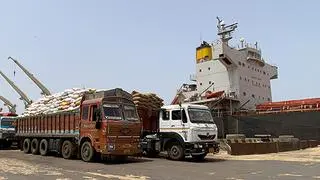Developing economies are about to see the “uberization of agriculture” and India is no exception. According to estimates, India’s per capita tractor ownership is quite low at 2.38 per 1,000 farmers.
Press Information Bureau disclosed that ₹5,994 crore was released for agricultural mechanization from 2014-15 to 2022-23. There are more than 21,000 custom hiring centers (CHCs) containing more than 66,000 farm machinery and thousands of farm machinery banks (FMBs) (see graphic). CHCs are growing at a CAGR of 14 per cent.
However, the spread of CHCs is highly skewed, dominated by Punjab, Haryana, Uttar Pradesh, and Andhra Pradesh(graphic).

Furthermore, machinery rental markets are still unorganised.
Hence, there is a dire need to improve the functioning of CHCs to boost farm mechanization.
So, how can the geographical footprint of CHCs be expanded? How can institutional and governance initiatives help “uberize” agriculture, integrating technology, machinery, and farmers?
Policy suggestions
Given the acute shortage of per capita machinery ownership, developing countries must create an environment that enables tractor owners to connect with farmers through digital apps, and GPS-based monitoring devices mounted on tractors can remotely monitor their spread.
A digital booking platform can aggregate farmers’ demand and connect them to the nearest tractor centres.
Second, FMBs owned by CHCs can be linked to the digital apps of agri-tech firms. CHCs could be set up on a franchise model of agri-tech firms operating in irrigated and rainfed farming regions. Third, to achieve economies of scale, CHCs need to offer a bouquet of services to farmers, for example, integrated crop management, crop residue management, and drone operation. Agri-tech firms can also promote digital literacy among farmers.
Fourth, telecommunication network density is crucial to promote smartphone adoption among farmers, and digital booking apps should be user-friendly and render utility services to farmers or their organizations. FPOs can help connect their members with CHCs owned by the panchayat, or FPOs.
Fifth, real-time data sharing can enable CHCs to manage tractor or machinery operators, check fraudulent activities, and optimize machinery utilization rates. Farmers can also reduce their transaction costs of accessing tractor services by finding the nearest tractor hiring centre via a digital booking platform.
Sixth, governance and management of CHCs are critical to “uberize” machinery hiring markets. As CHCs run on the principles of cooperation, their governance and management must mitigate the twin issues of “elite capture” and “social exclusion”.
Seventh, the Ministry of Agriculture and Farmers Welfare must facilitate revamping the agricultural machinery hiring markets by designing incentive mechanisms for agri-tech firms, operators, service providers, and financial institutions.
To conclude, the Interim Budget should facilitate the allocation of funds to the sub-mission on agricultural mechanization (SMAM) and encourage rural banks to expedite credit delivery for machinery purchase through priority sector lending. Revolving funds for CHCs maintenance and capacity building of tractor operators and FPOs should be added to SMAM.
The writer teaches at IIM Lucknow. Views expressed are personal.








Comments
Comments have to be in English, and in full sentences. They cannot be abusive or personal. Please abide by our community guidelines for posting your comments.
We have migrated to a new commenting platform. If you are already a registered user of TheHindu Businessline and logged in, you may continue to engage with our articles. If you do not have an account please register and login to post comments. Users can access their older comments by logging into their accounts on Vuukle.